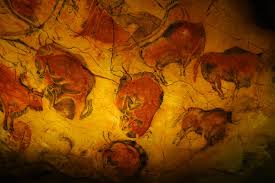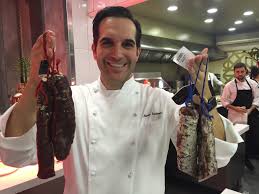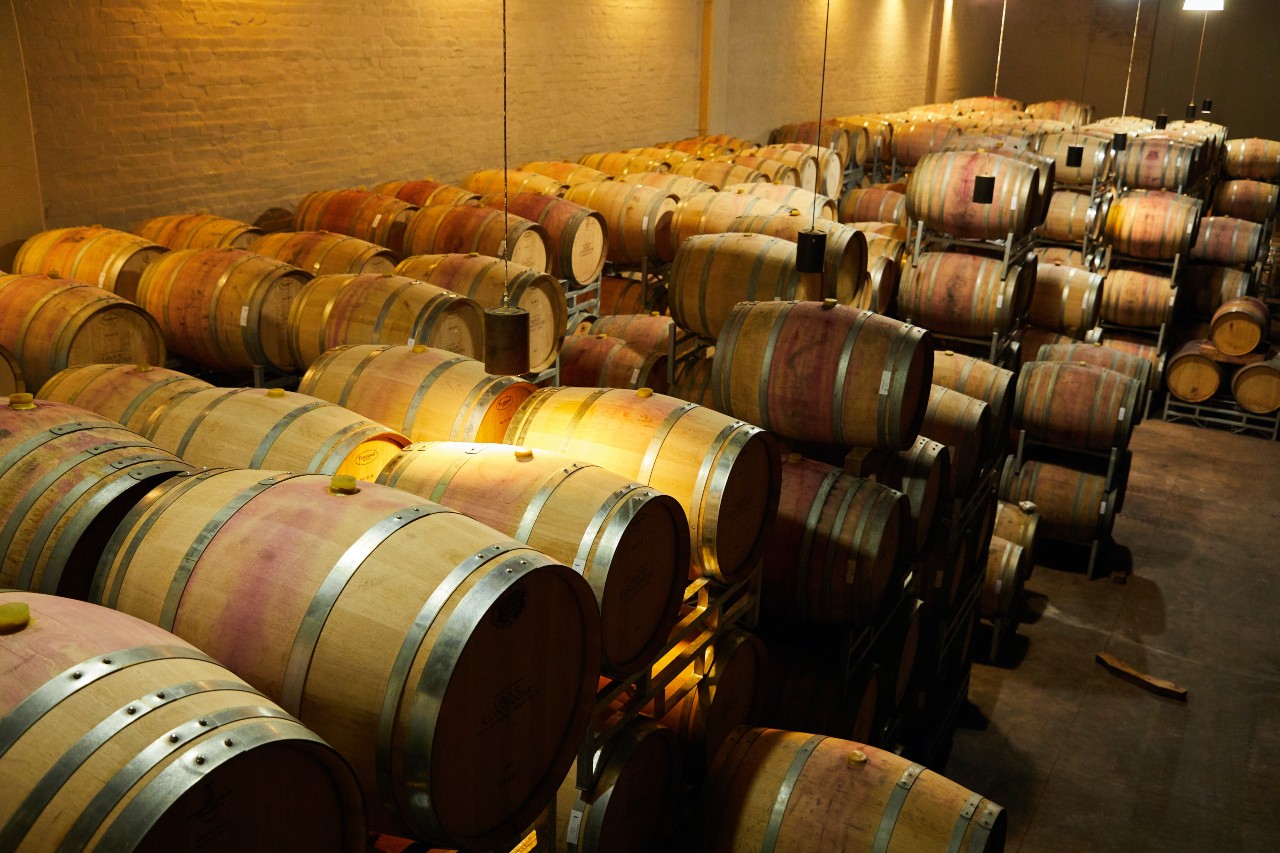The reality of Spanish history is sometimes told through many historical events which are coloured by Anglo-Saxon legends and that we the Spanish have needily adopted as our own, whilst knowing that they are false. There are many examples of this, such as that the Invincible Armada was actually called the Armada of Happiness. However that is a story for another day, but which allows me to introduce today’s topic which is the fighting bulls in Spain. If we, the Spanish, enthusiastically adopt all the Anglo-Saxon festivals then why not in reverse? Probably because we’ve rarely bothered to explain what they actually are. This is the motive behind this section which I’ve allowed myself to call “Eat Spain” amongst other reasons because I’d be delighted if it were read by all those who travel to Spain with more interest in and curiosity about our culture than those who come as sun and beach tourists. I believe that being more knowledgeable allows one to appreciate and to enjoy things more. One may or may not agree but knowledge gives pleasure.

Bulls are one of the best known Spanish traditions worldwide and also one of the most controversial. The origin of this race of bulls can be found in the primitive aurochs which although they didn’t live exclusively in Spain, they did find in the country their preferred place of settlement; surviving until our times. In other regions, where they had also lived in distant times, they became extinct, considered as an archaic zoological species.
The fighting bull is Spain’s greatest contribution to world genetics and livestock breeding. Prior to the development of important breeds of cattle and pigs by the innovative English breeders in the XVII and XVIII centuries, even before the creation of the stud book of the English thoroughbred in 1791, in Spain the fighting bull was already recognized. The early Spanish breeders were at that time controlling and taking note of the genealogy, behaviour and features of the breed in primitive stud books.
The fighting bull is a descendent of the auroch or wild bull of the Middle Ages, which was common all over Europe, with more than possible contributions from the cattle brought over by the Celts who lived in the North of Spain and Portugal and contributions from the cattle that moved to the Iberian peninsula from Africa in the Quaternary period, coinciding with the ice age.

Just as in Greco-Roman culture, the bull is closely linked to the roots of Hispanic culture. It is the most emblematic animal, even to the point of being a symbol of popular festivals and its image impregnates all aspects of the arts, from cave paintings, and the rough hewn Iberian bull sculptures to the most modern tendencies of Spanish culture, such as drawings, etchings, paintings, sculptures and also of course in our literature. The bull plays a fundamental role in the economy of the Iberian peninsula, even the landscape has been changed by the need to maintain large herds and it has encouraged the creation of the cattle fairs which were so important in the development of villages and towns.
The fighting bull owes its birthplace, origins and lineage to Spain, from where it spread and was exported to Portugal, the South of France and many countries on the American continent primarily during the XX century.
Thanks to the concurrence of interests of a popular culture with a deeply rooted bullfighting tradition, and the equestrian activities of the nobles and Knights of the Middle Ages to the skill demonstrated at playing with the bulls by those who were responsible for them in the pastures and the slaughterhouses allied with the intelligent art of selection and rearing of the breeders, this beautiful animal was created, one of the jewels of animal husbandry worldwide.
In the Bible itself we can find references to the sacrifice of fighting bulls as a sacrifice to divine justice, the bull being considered as a symbol of strength and ferocity. In the same way we can also find references to the religious sacrifices celebrated by the Iberians. During these ceremonies the fighting bulls were sacrificed in public spectacles which pitched man against bull. The hunting of the aurochs, where the first confrontations took place, is also considered as an important historical precedent, in these hunts skill and dexterity were more important than physical strength. It is in these ancient traditions where perhaps we can find the origins of bullfighting.

The pressure exerted by humans on the wild aurochs increased over time, they continued to be hunted for meat (this is believed to be the principal cause of their extinction, but the reduction in their numbers was due in large part to the razing of the woodlands where they lived to create agricultural land and the competition that they faced for the grazing land from the new bulls and domestic cattle. Before Roman times, the wild auroch was already extinct in the more urbanised regions of North Africa, the Mediterranean coasts, Mesopotamia and India although the populations of Northern Italy still supplied with certain frequency the Roman circuses during the Empire. In the Low Middle Ages they were only plentiful in Eastern Germany and in the XVI century there is no evidence that they existed outside the forests of Poland. In 1476 the ownership of these forests and the right to hunt there passed to the Polish royal family so that the death of an auroch became the privilege of a king. The care with which the aurochs were bred during the reign of Sigismund the Old and his successor is astounding: they were constantly guarded so that they weren’t bothered either by man or by wild animals, and in the winter they were fed with hay. The later kings were not so careful, although they continued to hunt them.
In Spain at the time of the Catholic Monarchs, the fighting bull was becoming known, in fact the first evidence of selective breeding of fighting bulls points to the XV and XVI centuries in the province of Valladolid, where the proximity of the Court, still itinerant at that time, led to the breeding in huge stretches of land of a herd which would lay the foundations for the present day fighting bulls. The name of this supposed primordial breed was Raso de Portillo and it was known until the end of the XIX century. It is believed that these bulls were the first to be used in the royal celebrations.
At the same time stockbreeding was developing in other parts of Spain. It was in the second half of the XVII century when the herds of fighting bulls began to be organized although still without clear commercial aims. It took another century until bullfighting gained importance and the breeders clearly oriented to bullfighting began to appear with definite financial objectives.
Therefore, the present day bull can be considered as the result of selective breeding carried out from the beginning of the XVIII century through many trials to select those used to breed, exemplary specimens combining specific qualities, which would allow them to perform in the bullfights.

The only historical exception to the continuity of the celebration of bull fights in Spain and the fondness for them is found in Muslim Spain, when they were banned being considered abominable. However medieval Spain continued the spectacle albeit in a different form, as a sport of the nobility. The feudal lord, on horseback and armed with a long pole used as a lance, fought against the fighting bull , thus demonstrating his abilities and skill as a rider. This type of jousting known as luck of the lances, is considered to be the direct precedent for today’s Rejoneo (horseback bullfighting).
Fighting bulls are born and grow up in the country, on large bull ranches. The ranch is a large dry farm, with abundant grazing land and wooded areas, generally of oaks and holm oaks, where the cattle graze freely. Most of them are found in Spain but they can also be located in Mexico, Portugal, Colombia, France, Venezuela, Ecuador and Peru. It was Hernán Cortés who first took bulls to New Spain with the permission of Emperor Carlos V.
A bull ranch has several hundred breeding cows, the required number of stud bulls and the bell-oxen herd necessary for moving the cattle around the countryside. Just as the cattle are important, the human personnel is also indispensable for the smooth operating of the ranch. The foreman is in charge of carrying out the orders of the stockbreeder. Another important figure is the conocedor, an agricultural technician who knows all the bulls and their genealogy. In every ranch you can also find cowboys, ox herders, cowherds and shepherds who take care of the bulls, cows, oxen and the young.

In the present day the alimentation of the cattle is very important. There is a lot of control of the fodder and feeds. The rise in the price of feeds for the bulls has led to an increase in the prices of the fighting bulls which fluctuates between around 5,000 and 18,000 Euros per bull.
The breeding and the bravery of the bull is verified through trials known as tientas, which are the most important test of the bull prior to the bullfight, basically they are tests based on the “luck of the lances”, the bull calf undergoes a test of resistance where he is hounded and confronted with the tip of the picador’s lance. This is done in the test ring, a small bullring which every ranch has for this purpose. In some instances this is done in the open countryside, which would demonstrate great bravery on the part of the bull calf.
If the results of the trial are inconclusive and might lead to an error in the rancher’s valuation, a further trial, the retienta is carried out in which the strength and age might prove to be more consistent. One must be careful that during this process one doesn’t teach the bulls anything which they might learn and then use in the final bullfight. This is a great danger for all those who might stand before them when they are full grown bulls. For this reason in the bull trials neither capotes (large gold and magenta capes used at the beginning of the bullfight) nor muletas (small red capes used in the final stage of the bullfight) are used, as the bull that sees them might remember to directly attack the bullfighter, making a mockery of the artifice.
Another very interesting operation is the acoso (harassment) and derribo (conquest). This is carried out on horseback using a pole which has a point of barely two centimetres, so that it only hooks into the skin without causing any damage to the bull even though it is speared several times.
Moving the bulls around is a complex task, both on and off the estate. In both cases the role of the oxen is absolutely necessary as they both group together and protect all the bulls.
In the country the bulls are extremely well-looked after from birth. When the calves are a year old they are called yearlings, at two years old they known as “erales” and are used in the amateur bullfights without picadors. When they are three years old they are called “utreros” and at this age they now use picadors in the amateur bullfights, whilst at four and five years old they participate in bull-fights. Before their moment in the bullring, and whilst they are growing they are extremely well-cared for, from the food they eat to the veterinary controls which they undergo periodically at the ranch. The bull is the master, the King of the estate and as such fights to earn its living.

Another Curiosity about the Fighting Bull is the aspect of its emotional intelligence. The bull, at the height of its powers, is the most gallant animal that exists… Mother Nature bequeathed this unique and special bovine with an array of qualities: presence, power, nobility and bravery –this last so difficult to define, not only by the breeders, but also by scientists and academics-, is no longer an unknown quantity- given that in December 1963, Spanish university lecturers at the University of Córdoba, the doctors José Manuel Rodríguez Delgado, Francisco Castejón Calderón and Francisco Santisteban García, discovered the neuronal centres which activate the reactions of flight and defence in the fighting bull. The bulls previously scrupulously selected for the bullfight, once in the ring but before the moment of actual confrontation, perform a series of movements and looks, arrogant postures, forward rushes, retreats, bellowing, etc., giving the impression that from a distance they are measuring their strengths and programming the strategies to follow with admirable caution.
Thus, the psychic and social life of the bull, is richly integrated by a series of psychological phenomena, including a remarkable attention span, memory, associative memory, feelings, passions, expressions and inclinations within the affective phenomena, all of which lead us to the need to accept that they have more than an elemental intelligence.
Now we should give a voice to those who have written of and about bulls, people it must be said, who are not exactly uncultured. Let us remember, the words of Salvador de Madariaga, who said of the bullfight: “It is where almost all the arts participate. Fundamentally it is a drama: man in constant danger and the bull destined to die; certainties which give it, its special tension.. The other Arts fuse with this dramatic element. A bullfight is a painting of unrivalled beauty, in which colour and the changing light play a decisive role. At the same time it is a sculptural masterpiece, in which elements of ballet play an important role, a synthesis of colour and movement. Moreover it is impossible to imagine a bullfight without music.
The case of Don Américo Castro, is unique. For him bullfighting is the “National spectacle, a symbol of living at risk, of facing a threatening destiny, which can only be warded off through the ploying of heroic skills (…), a solemn rite in which the authentic Spain, unknowingly, pays homage to the essence of its way of life”.

Federico García Lorca didn’t beat around the bush when it came to giving his opinion about bullfighting, of which he said:-«Bullfighting probably resumes the vital poetic richness of Spain, strangely underexploited by writers and artists, principally due to the falsely pedagogical education we received and which the men of my generation have been the first to reject. I believe bullfighting to be the most cultured festival in the world »-.
Likewise there are many phrases which perpetuate admiration for the art of bullfighting. Manuel Machado once said that «rather than a poet, I would have preferred to be a good banderillero», Ortega y Gasset confessed -«I would have switched my fame for the glory which is given only to the matadors »_. Pérez de Ayala was spoken to about the cruelty of bullfighting to which he replied «you are right, if I were President of the government I would ban bullfights, but fortunately as I am not, I don’t miss a single one ».

Everybody knows Ernest Hemingway’s passion for the bulls and his friendship with Niño de la Palma, which inspired him to write “Death in the Afternoon” in 1932, although he had already dealt with the subject of bullfighting in 1927 in ”An afternoon of Bulls” and later in “The Dangerous Summer” in which he recounted the rivalry between Luis Miguel and Antonio Ordóñez, who received from Hemingway the same admiration which the American Nobel prize winner had previously felt for his father. The spectacle that is bullfighting has always made a deep impression outside Spain and thus it is that Henri de Montherlant, a member of The Academie Française dedicated part of his work to the subject. He even participated in bullfights in several French bullrings and also in Albacete and Burgos, dressed in the traditional bullfighting suit, known as the “traje de luces” (suit of lights).

To make a compilation of all bullfighting literature is an impossible task, but we would like to put on record several notable figures who dedicated part of their work to the bullfight. José Bergamín (The Silenced Music of the Bullfight), Vicente Aleixandre (Bull, The Goring, Bullfight in the Village, The Mystery of the Death of the Bull), Dámaso Alonso (Torrent of Blood), José María Pemán (The Bullfighter Dressing), Jorge Luis Borge (Diverse Andalusia), Miguel Ángel Asturias (Toro-Tumbo), Pablo Neruda (Arrival at Port Picasso), Rafael Duyos (The five year old Bull), Manuel Altolaguirre (There was Pain and Joselillo), José Antonio Muñoz Rojas (Elegy for Manolete), Gustavo Adolfo Bécquer (The bullfight in Aragón), Juan Ramón Jiménez (The Aurorae of Moguer), Alfonso Canales (An Ode to Antonio Ordóñez, Lázaro, the Bull), Fernando Villalón, Felipe Sasone, Jean Cocteau, Nikolai Aseiev, José Carlos de Luna and Jorge Guillén.

It’s time to end, I can’t afford to dwell on the role played by Bullfighting in painting, in cinema, photography, theatre, anthropology, history, science, Tauro-Traumatology, the economy, journalism, veterinary sciences, ecology, the new performing arts, sociology, gastronomy and architecture. Neither do I want to omit the impact of the festival on the foreign intellectuals, we can cite, as an example, the fascination that the spectacle and certain bullfighters held for the romantic travellers of the XIX century. Or more recently for the North Americans Orson Welles and the Nobel prize winning Ernest Hemingway. Or above all a plethora of present day French intellectuals whose approach to the bulls is one of veneration and enormous tolerance and respect.
Now perhaps one can understand and correctly evaluate the breeding and the origin of the fighting bull. Here I’ll offer a few suggestions for those who are curious about the subject and wish to get more enjoyment from the bull and all which surrounds it.
The Route of the Bull travels through the areas of the ranches where the fighting bulls and the indigenous breed, retinta, much appreciated for their meat, are raised. An area of enormous scenic and cultural value, where one can observe the totemic animal in its natural habitat, the pastures.

Spread between the provinces of Cádiz y Málaga we can find a group of villages which appear to climb between the mountains, clusters of white houses which offer us an original and picturesque view of the area, known as the Pueblos Blancos (White Villages). Its name derives from the old custom of the inhabitants to whitewash the façades of their houses, decorating them with ceramic pots filled with vibrantly coloured flowers, which form a display of colour on which to feast one’s eyes. One that is further enhanced by the gold of the sun, the brown of the mountains, the green of the highlands and the blue of the sky. The route runs between Jerez de la Frontera and Tarifa, passing through the towns of San José del Valle, Paterna de Rivera, Medina Sidonia, Benalup-Casas Viejas, Alcalá de los Gazules, Jimena de la Frontera, Castellar de la Frontera, San Roque and Los Barrios.
Extremadura, together with Andalusia, and Castile and León, is another of the great ‘heartlands’ of the fighting bulls. Should you wish to visit a Fighting bull ranch it is always a good idea to fix a time in advance so as to avoid possible problems. Living, on a small scale all the atmosphere of the countryside and the bulls is something which can be experienced most of the year, and going on a “safari” through the very domains of the bulls will make the faena (passes with the cape) even more of an emotional experience.

Beauty and presence, but also strength and bravery, is the image offered by the fighting bulls, above all when you see them up close in their natural environment. One can almost touch them; certainly it’s possible to smell them, to look into their eyes, to feel their ferocity close up. One can even ‘trek’ by their side through the pastures which they roam with total freedom, of course, we are well-protected inside an SUV and always following the instructions of the guides and experts who accompany the traveller in this original safari in the lands of Cádiz, Cáceres and Salamanca.
A visit to the wineries is obligatory for any visitor to the area. The production of the wines of Jerez is protected by the “Regulatory Council of the Denominación de Origen Jerez – Xérès – Sherry”, as is the prestigious “Vinagre de Jerez” (sherry vinegar), with the traditional system of soleras and criaderas (matured in the barrel) during the ageing process.
Finally, to sample and accompany the wines of Jerez, the meat of the fighting bull, an animal raised in total freedom, feeding only the most natural food, also forms part of our diet. The chef Mario Sandoval, of Coque restaurant, with two Michelin stars in Madrid, has developed cold cuts and several dishes using the meat of the fighting bull. The fighting bull is “the oldest breed in the world and represents Spain in a way that few products do, being one of the flagships of Spanish gastronomy.

In collaboration with the Fighting Bull breeders Union, the CSIC (State Scientific Research Council) and some of the largest meat companies in the country, Sandoval has begun developing cold cuts such as cured beef, ham, salami and both fresh and cured chorizo which are now being sold commercially.
In the kitchen, one can prepare dishes such as a pastrami with a mushroom stroganoff and a haricot bean purée, which uses the topside, sirloin and tail; jerky, that is to say meat which has been seasoned or marinated then dried, with sirloin, skin, and cheek or tendons with tongue. Delicious!
Los toros es la Fiesta más culta que hay en el mundo
Fundamento Cultural de la fiesta de los toros
Asociación Nacional de criadores de toros de lidia de México
El Toro Bravo – Ganaderos de lidia Unidos
A Porta Gayola
Unión de criadores de toros de lidia
Toro de lidia
Todo Sobre España










